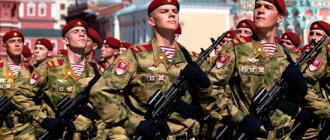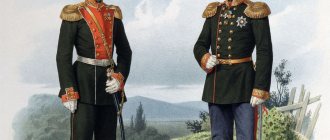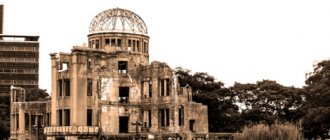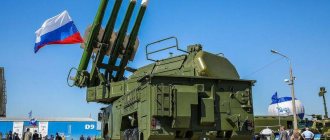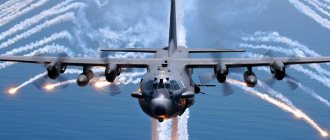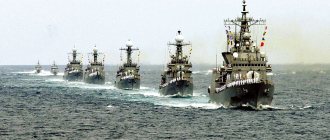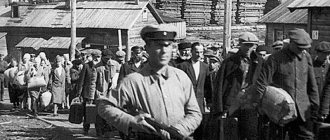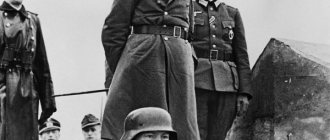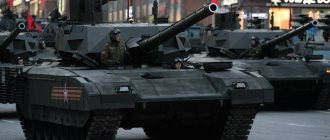Background
Oprichnina troops
The beginning of the formation of the oprichnina army can be considered the same year 1566, when a detachment of 1000 people selected from the “oprichnina” districts was formed. Subsequently, the number of “oprichniks” reached 6,000 people. The Oprichnina Army also included detachments of archers from the oprichnina territories. But these are not residents. Tsar Ivan the Terrible introduced the institution of so-called “tenants” to “protect Moscow.” According to the orders of the governor, nobles were sent to “live in the capital”, who made up an army of up to 3,000 people, they changed every three months. Until 1565, the functions of maintaining public order were performed by guardsmen. Then the king created a special “oprichnina army” from them. Subsequently, “residential regiments” were stationed in the southern cities of the then Russian kingdom, which served as a kind of border guard.
Garrison troops
“Residential regiments” were replaced by Peter the Great with “garrison troops,” a special type of troops consisting of the former city archers, soldiers, reiters and from people of the new regular regiments incapable (old, married, etc.) for field service. Until this time, their functions were performed by the royal infantry and city Cossacks.
Inner Guard
The Separate Corps of the Internal Guard (OKVS) was formed on March 30, 1816 (based on the decree “On naming the internal guard the Separate Corps of the Internal Guard”) by bringing together the units of the former Inspectorate of the Internal Guard, which was gradually created in 1811 by several decrees of Alexander I: January 16 and 17 , and also from March 27.
On February 1 (13), 1817, as part of the OKVS, on the basis of the approved regulations “On the establishment of gendarmes of the internal guard,” gendarme units were formed. The duties of the gendarmes coincided with the duties of the internal guard, with the exception of collecting taxes and guarding public places and prisons.
In 1864, as a result of military reform, the Separate Internal Guard Corps was abolished and local troops were created.
Gendarmerie
In 1836, the gendarmerie units of the internal guard were transferred to the Corps of Gendarmes, created back in 1827 under the auspices of the III Department of His Imperial Majesty's Own Chancellery. As a result, the Corps of Gendarmes was reorganized into the Separate Corps of Gendarmes, with the creation of several (first five, then eight) gendarme districts on the territory of the Empire.
The Red Guard are voluntary armed detachments created by territorial party organizations of the RSDLP(b) to carry out the 1917 revolution in Russia, the main form of armed organizations of the Bolsheviks during the preparation and implementation of the October Revolution and the first months of the Civil War. The Red Guard detachments did not have an all-Russian command; they were created and disbanded by decisions of local party and Soviet bodies. In June 1918 it joined the Red Army.
During the Civil War
After the October Revolution, the Soviet state faced an acute issue of organizing internal security. It required the creation of government bodies that could prevent both the counter-revolutionary movement and carry out the fight against crime in the territories under its control.
For this purpose, from January to March 1918, the first armed detachments were created under the Cheka and local emergency commissions.
Later in March 1918, the local units of the People's Commissariats were united into the Combat Detachments of the Cheka.
Internal troops of the USSR Ministry of Internal Affairs
On July 10, 1934, the Central Executive Committee of the USSR decided to create an all-Union People's Commissariat of Internal Affairs (NKVD). By the same decree, the OGPU troops were divided into border and internal security of the NKVD of the USSR, or internal troops (since 1946 - the Ministry of Internal Affairs of the USSR).
In the period from September 1, 1939 to March 21, 1989, the Internal Troops were part of the structure of the Armed Forces of the USSR, and were subordinate to the Ministry of Internal Affairs of the USSR.
On January 3, 1960, the Council of Ministers of the USSR abolished the Ministry of Internal Affairs of the USSR, transferring its functions to the ministries of internal affairs of the union republics. Accordingly, the Internal Troops are distributed among the union republics and become subordinate to the republican Ministry of Internal Affairs on a regional basis. Since 1968, the Internal Troops again find themselves within the structure of the USSR Ministry of Internal Affairs.
On March 21, 1989, by decree of the Presidium of the Supreme Soviet of the USSR, the Internal Troops of the USSR Ministry of Internal Affairs (along with the Border Troops of the KGB of the USSR and the Railway Troops) were withdrawn from the Armed Forces of the USSR.
On December 25, 1991, as a result of the Collapse of the USSR, the Internal Troops of the USSR Ministry of Internal Affairs ceased to exist. Units and formations of the Internal Troops became part of the Armed Forces of the newly formed CIS member states.
Internal troops
The Internal Troops of the Russian Ministry of Internal Affairs were created in 1992 after the collapse of the USSR. The troops included all former formations of the Internal Troops of the USSR Ministry of Internal Affairs, stationed on the territory of the RSFSR.
HISTORICAL REFERENCEIn Russia, until the beginning of the 19th century, there were no special armed formations to maintain order and ensure the safety of the population, provide assistance to people in case of natural disasters and perform other law enforcement tasks. In the 16th-17th centuries, some of these functions were performed mainly by units of the Streltsy army. Under Ivan the Terrible, formations of so-called “tenants” were created to guard Moscow. It was an army consisting of serving nobles, numbering about three thousand people. Subsequently, units of “tenants” were located in Kyiv, Belgorod, Kursk and some other cities. Under Peter I, internal security in the state was ensured mainly by formations of soldiers incapable of field service. They were called "garrisons", later - "garrison" and (or) "internal battalions" and were a reserve of field troops.
The development of internal troops can be divided into four historical periods:
1. The initial period (1811-1917), which lasted more than a hundred years, from the creation of internal guard troops, their reorganization into local troops and convoy guards until the October Revolution of 1917. 2. Soviet period (1917-1991) - formation of the troops of the Cheka-OGPU-NKVD-MGB-MVD of the USSR, their formation, development and service and combat activities. 3. Modern period (from 1991 – 2016). — internal troops of the Ministry of Internal Affairs of the Russian Federation. 4. The troops of the National Guard of the Russian Federation were transformed from the internal troops of the Ministry of Internal Affairs of Russia while maintaining the structure of the Internal Troops of the Ministry of Internal Affairs of Russia. Initial period Radical changes in ensuring internal order and convoy service in Russia occurred during the reign of Emperor Alexander I. On March 27, 1811, Emperor Alexander I issued a Decree on replenishment from regular companies transferred back in January of the same year “from civilian to military command.” ”, garrison battalions, which became known as “provincial battalions” and were soon united into a single structure - the internal guard of Russia. On July 3, 1811, Alexander approved the Regulations for the Internal Guard, which defined its purpose and tasks. They were: the fight against robbers, robbers and other criminals; detention of escaped criminals and deserters; combating the transportation of smuggled and prohibited goods; ensuring order and security during the holding, as we say now, of mass events - fairs, folk festivals, church holidays; providing assistance to the population during natural disasters - floods, fires and others, escorting prisoners, prisoners, recruits, state treasury (large sums of money) and other law enforcement tasks. The first commander of the internal guards was General E.F. Komarovsky, a professional military man, participant in the Italian and Swiss campaigns (1799) of the Russian army under the command of A.V. Suvorov, then assistant to the St. Petersburg military governor. An experienced and talented administrator and military leader, E.F. Komarovsky led the internal guard for more than 17 years. By royal decree of July 25, 1829, 5 linear battalions and 3 mobile companies were formed to protect the mining factories of the Urals and Nerchinsk, where gold and silver were mined, and the St. Petersburg Mint. They were maintained at the expense of the Ministry of Finance. We can say that these were the first units to protect important industrial facilities and escort special cargo. Radical transformations of the internal guard took place in the 60s of the 19th century during the military reform carried out in Russia. Then a district troop control system was introduced in the Russian army. The entire territory of the country was divided into military districts. In August 1864, the headquarters of the Separate Corps and the internal guard district were abolished, and the brigades and battalions were reorganized into the corresponding units of local troops, which included convoy teams. Local troops were part of the corresponding military district. The next stage of reform of the internal security forces took place in 1886, when the convoy teams were consolidated into convoy guards. The order of the Military Department of May 16, 1886 ordered the formation of 567 (actually 530) teams for convoy service on the basis of the existing stage, convoy and local teams. Recognition of the services of the internal and convoy guards to the people and the Fatherland was the celebration on March 27, 1911 of the 100th anniversary of the local troops and convoy guards. In honor of the anniversary, a badge was established to be awarded to: officers - made of silver; the lower ranks are made of white metal. After the February Revolution, local troops and escort guards voluntarily went into the service of the new government. On March 12, 1917, the chief inspector for the transfer of prisoners, Lieutenant General N.I. Lukyanov, together with the officers of his office, swore “allegiance to the service of the Motherland and the Provisional Government,” which he informed his subordinates about in order No. 1.
Development of internal troops (1917 - 1991)
In 1917 the old army was disbanded. The convoy guard did not undergo significant changes, continuing to perform its functions in a reformed form under Soviet rule. The October Revolution broke the old state institutions of power, but it soon became clear that it was impossible to manage the country without law enforcement agencies. Already the first days of the existence of Soviet power showed: to establish a new system, not only the army, navy, and government bodies are needed, but also special forces to prevent and combat counter-revolutionary actions within the country, to establish and maintain revolutionary order locally, to protect important institutions, enterprises, railways, escorting and protecting counter-revolutionary elements, criminals and solving other problems. On May 28, 1919, a resolution of the Council of Workers' and Peasants' Defense "On Auxiliary Troops" was adopted. Now these formations began to be called “troops of the internal security of the Republic (VOHR).” This event was a milestone in the construction of the internal troops of the Soviet state. On September 1, 1920, on the basis of the internal security forces of the Republic and other formations, the internal service troops of the Republic (VNUS) were created. On January 19, 1921, the VNUS troops were transferred to the military department. The exception was the units serving the emergency commissions, as well as the railway and water police, which in all respects were subordinate to the Cheka, and later to the GPU - to the OGPU. Along with solving special tasks, troops were often involved in combat operations at the front. The successes of the country's industrialization and the growing importance of railway transport in the economy and defense of the USSR led to the formation in the late 20s and early 30s of the OGPU troops of such a component as troops for the protection of important industrial facilities and railway structures. By the end of the 30s, there was a need to reorganize the command and control of the NKVD troops, which was due to the constant increase in the volume of tasks they performed and the diversity and difficulty of controlling the troops. During the Great Patriotic War, along with protecting the rear of the active army, fighting enemy landings, saboteurs, and nationalist gangs, units and formations of internal troops took a direct part in battles with the Nazi invaders. It is estimated that during the war years, the active army at different periods included and participated in battles 53 divisions and 20 brigades of the NKVD troops. In addition, the NKVD of the USSR formed and transferred 29 divisions to the front. In January 1947, in order to increase the efficiency of ensuring state security, operational units, and in April 1948, special units of the troops, were transferred from the USSR Ministry of Internal Affairs to the jurisdiction of the USSR Ministry of State Security. They were part of this department until March 1953, and then were again reassigned to the USSR Ministry of Internal Affairs. Important organizational measures for the construction of the MVD-MGB troops were carried out in 1951. During this period, the Ministry of Internal Affairs troops for the protection of especially important industrial enterprises and railways were abolished, and their functions were transferred to paramilitary security. The convoy troops were also significantly reduced; they were reorganized together with the internal troops into convoy and internal security. On March 15, 1953, the Ministry of Internal Affairs and the Ministry of State Security were merged into a single Ministry of Internal Affairs of the USSR. They remained in this composition until 1954, when the State Security Committee under the Council of Ministers of the USSR was formed. Formations and units of internal and convoy security remained part of the Ministry of Internal Affairs, and border troops began to report to the KGB. In January 1960, the USSR Ministry of Internal Affairs was abolished. Its functions are transferred to the Ministry of Internal Affairs of the union republics. The Main Directorate of Internal and Convoy Troops also ceased its activities. From that moment and over the next six years, there was no single body for the control of internal troops in the country. In each union republic, where military directorates and departments were formed within the ministries of internal affairs, issues of military development were resolved differently, based on local conditions. The lack of unity in the leadership of the troops had a negative impact on their service and combat activities. Therefore, in 1966, the Union-Republican Ministry for the Protection of Public Order of the USSR (MOOP USSR) was created. As part of the newly created ministry (from November 25, 1968 it became known as the Ministry of Internal Affairs of the USSR), the Main Directorate of Internal Troops was formed. On March 21, 1989, the Presidium of the Supreme Soviet of the USSR adopted the Decree “On the withdrawal of border, internal and railway troops from the Armed Forces of the USSR.” The decree extended to the troops the procedure, conditions and terms of service, manning, in the same way as for the Soviet Army and Navy, and preserved the order of their material, technical and financial support.
Internal troops of the Ministry of Internal Affairs of Russia at the present stage
The collapse of the Soviet Union put an end to the unified internal troops of the USSR Ministry of Internal Affairs. In February 1992, the staff of the Main Directorate of the Commander of Internal Troops (GUKVV) of the Russian Ministry of Internal Affairs was approved. After the collapse of the Soviet Union, peacekeeping operations of the internal troops were limited to the North Caucasus region - North Ossetia, Ingushetia, Chechnya, and Dagestan. In areas of emergency, internal troops served to protect public order and ensure public safety. March 27 became the Day of Internal Troops of the Ministry of Internal Affairs of the Russian Federation, which was established in 1996 by Decree of the President of the Russian Federation. In the post-Soviet era, in the second half of the 90s, the Russian Federation carried out a reform of troops of such a plan as the explosives. Their task, which they previously constantly performed in terms of carrying out security functions, convoying convicts, etc., was removed from them, but their rights in terms of protecting and maintaining order in the country were expanded. Another reform in the Ministry of Internal Affairs took place in 2008, according to it, reorganization processes were carried out in the administration of districts - they became regional.
Troops of the National Guard of the Russian Federation
The formation immediately preceding the National Guard was the internal troops of the Russian Ministry of Internal Affairs, created in 1992. The troops included all former formations of the Internal Troops of the USSR Ministry of Internal Affairs, stationed on the territory of the RSFSR. On April 5, 2016, President Vladimir Putin decided to form the Federal Service of the Russian National Guard Troops (Rosgvardia), as well as transform the internal troops of the Russian Ministry of Internal Affairs into the Russian National Guard troops. The composition of the National Guard, according to the decree, includes special forces of OMON, SOBR, TsSN SOR and aviation of the Ministry of Internal Affairs of Russia, private security of the Ministry of Internal Affairs of Russia. The creation of the National Guard occurred as part of the reform to improve the work of law enforcement agencies in Russia. By presidential decree of April 5, 2016, Army General Viktor Vasilievich Zolotov was appointed Director of the Federal Service of the National Guard Troops of the Russian Federation - Commander-in-Chief of the National Guard Troops of the Russian Federation. On the same day, April 5, 2016, Vladimir Putin introduced bills on the national guard and changes to a number of legislative acts to the State Duma. The activities of the Federal Service of National Guard Troops are managed by the President of the Russian Federation. On January 16, 2016, Russian President Vladimir Putin signed a decree establishing March 27 as the Day of the Russian National Guard Troops. “Establish the Day of the National Guard Troops of the Russian Federation and celebrate it on March 27,” the decree says. The document notes that the date was set “in order to preserve the continuity of military traditions and increase the prestige of service in the troops of the National Guard of the Russian Federation.”
Creation of National Guard Troops
The troops of the National Guard of the Russian Federation were transformed from the internal troops of the Ministry of Internal Affairs of Russia by decree of the President of the Russian Federation dated April 5, 2016. The legal basis for the activities of the Russian Guard is regulated by Federal Law of the Russian Federation dated July 3, 2016 No. 226-FZ “On the troops of the National Guard of the Russian Federation” (adopted by the State Duma of the Russian Federation on June 22, 2016, approved by the Federation Council of the Russian Federation on June 29, 2016, signed by the President of the Russian Federation on July 3, 2016.) .
Tasks
The National Guard Troops of the Russian Federation are entrusted with the following main tasks:
— participation in the protection of public order, ensuring public safety;
— protection of important government facilities, special cargo, communications structures in accordance with the lists approved by the Government of the Russian Federation;
— participation in the fight against terrorism and extremism;
— participation in ensuring states of emergency, martial law, and the legal regime of counter-terrorism operations;
— participation in the territorial defense of the Russian Federation;
— providing assistance to the border authorities of the FSB of Russia in protecting the State Border of Russia;
— federal state control (supervision) over compliance with the legislation of the Russian Federation in the field of arms trafficking and in the field of private security activities, as well as over ensuring the security of fuel and energy complex facilities, over the activities of security units of legal entities with special statutory tasks and departmental security units;
— protection of especially important and sensitive objects, objects subject to mandatory protection by troops of the National Guard, in accordance with the list approved by the Government of the Russian Federation, protection of property of individuals and legal entities under contracts.
National Guard troops may be assigned other tasks by decisions of the President of the Russian Federation adopted in accordance with federal constitutional laws and federal laws.
Structure
The troops of the National Guard of the Russian Federation were transformed from the internal troops of the Ministry of Internal Affairs of Russia while maintaining the structure of the Internal Troops of the Ministry of Internal Affairs of Russia and are headed by the Director of the Russian Guard - the Commander-in-Chief of the troops of the National Guard of the Russian Federation.
Until 2022, it is planned to transfer to military service in the National Guard troops of employees serving in the special forces of SOBR and OMON of the territorial bodies of the Ministry of Internal Affairs of Russia, the special purpose center of the rapid reaction forces and aviation of the Ministry of Internal Affairs of Russia, who were operationally subordinate to the Ministry of Internal Affairs of Russia and the corresponding heads of the territorial bodies of the Ministry of Internal Affairs of Russia Russia. During the organizational and staffing measures, special attention during the reorganization into the National Guard troops will be paid to the higher state education of officers of the Ministry of Internal Affairs of Russia, their diplomas, faculties (specialties) and educational institutions.
By presidential decree, the staffing level of the central apparatus of the Federal Service of the National Guard Troops of the Russian Federation is 2,100 employees.
Higher educational institutions of the National Guard troops:
— Novosibirsk Military Institute of the Russian Guard named after. Army General I.K. Yakovlev;
— Perm Military Institute of the Russian Guard;
— St. Petersburg Military Institute of the Russian Guard;
— Saratov Red Banner Military Institute of the Russian Guard.
Also, at the Military University of the Russian Ministry of Defense there is a faculty that trained officers for the Russian National Guard troops.
And also, there is a faculty “Tactics and operational art of the national guard troops” at the Military Educational and Scientific Center of the Ground Forces “Combined Arms Academy of the Armed Forces of the Russian Federation” that trains officers of the Russian National Guard troops.
US National Guard: reserve army of last resort
The most famous of the modern formations of this kind in the world is the US National Guard, officially created in 1903. At the same time, the Americans themselves believe that the history of the National Guard goes back to the 17th century, when the first consolidated regiment was formed from disparate militia formations in the Massachusetts Bay Colony.
Currently, the US National Guard is a so-called organized reserve of the Armed Forces, which is used in crisis situations as internal troops.
National Guard formations exist in every state of the United States, with dual subordination - both to the state and to the federal center.
The National Guard can be activated in emergency situations by the state governor to perform various tasks within the country (disaster relief, maintaining law and order in the event of mass unrest, and others). Also, by decision of the US President, they can be used to support the Army and Air Force, including outside the US. In particular, about 300 thousand national guardsmen were involved in operations in Iraq and Afghanistan over the entire period of their implementation.
A member of the US National Guard, in field uniform and equipment, 1917. Photo: Public Domain
National Guard of Russia: 25 years from concept to implementation
The first attempt to form the National Guard in Russia was made in 1991, immediately after the so-called coup of the State Emergency Committee. President Boris Yeltsin intended to acquire his own security structure, which he hoped to rely on in conditions of severe political conflict.
By the spring of 1992, it was planned to create three brigades of the National Guard with a total number of up to 5,000 people, two of which were to be based in Moscow and St. Petersburg. However, then the creation of such a structure was curtailed. According to one version, the reason for this was Yeltsin’s fear that control of the new structure could pass from his hands into the hands of his political opponents.
Discussions that the National Guard, directly subordinate to the President of Russia, will nevertheless be created have continued over the past several years, and now such a decision has been finally approved.
